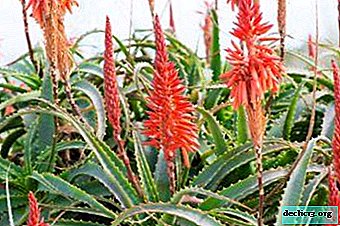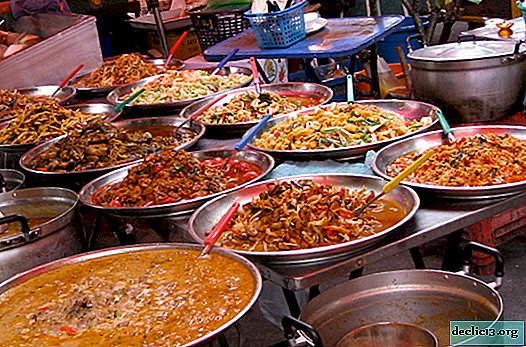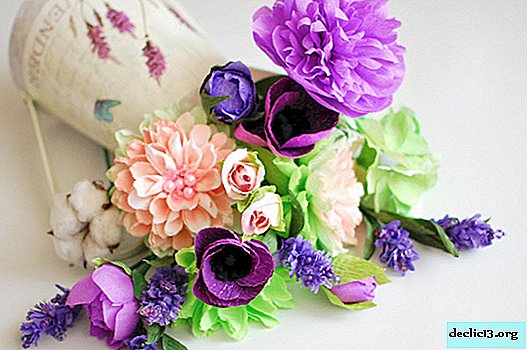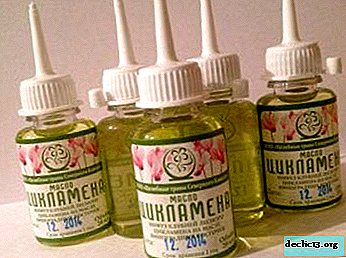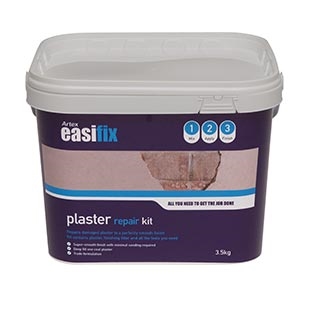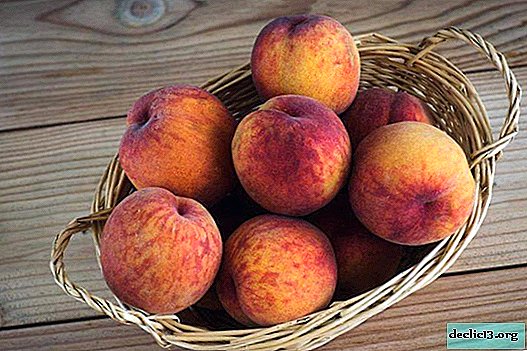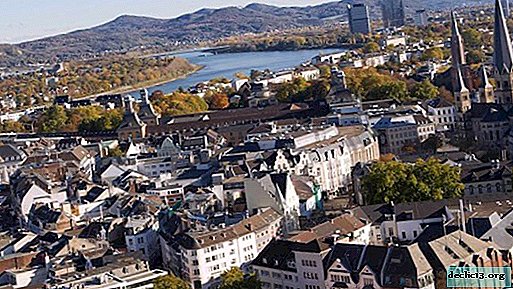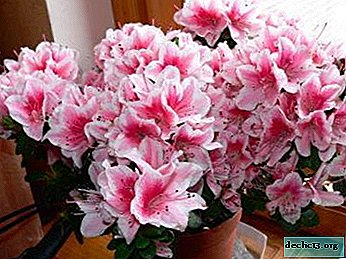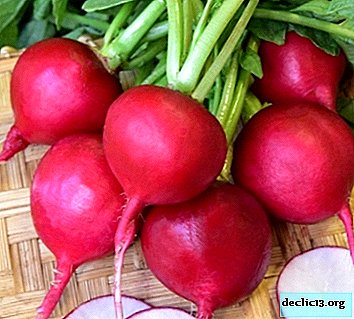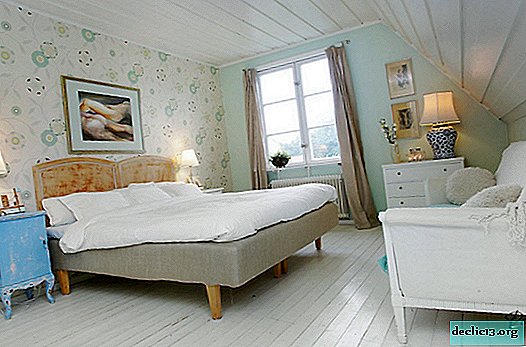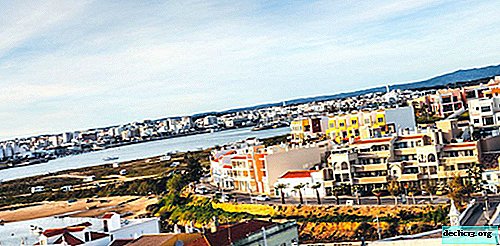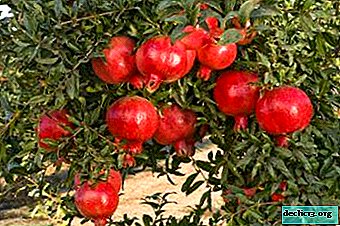We propagate anthurium: how to plant a plant by a shoot?
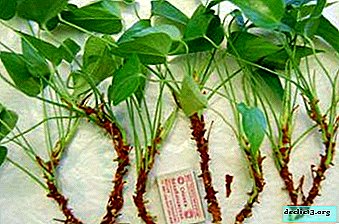
Any florist in the collection of which there is an anthurium knows that this plant willingly forms lateral processes - "babies" having their own developed root system.
Therefore, it is not difficult to get a few more copies of the anthurium, propagating it with side shoots at home.
This will be discussed in this article. And also you will learn: how to choose the right soil and a pot for planting, how to care for the flower after and what to do if the stalk disappears.
Advantages and disadvantages of the method
Propagation of anthurium by processes is a natural process provided for by nature itself. The lateral shoot very quickly adapts to the new environment and begins to increase the root and leaf mass, so the process of reproduction in this way is quick and painless. In this case, the young plant will repeat all the characteristics of the mother, for example, color.
It must be remembered that the roots of anthurium are very fragile, they can easily be injured or even destroyed.Therefore, the reproduction of anthurium is carried out only during transplantation, when the roots of the mother plant and the "baby" are exposed. You should not try to pull out the shoots with roots - the roots will completely break off, and then the process without roots will be long and reluctant to take root, so it will be difficult to root.
When is it better to propagate?
Transplantation of an adult plant and, therefore, reproduction by processes is best done in April - August. Spring and summer is the best time for vegetative methods of reproduction, since the plants are full of vitality, are actively developing, the air temperature is quite high, plenty of soft sunlight. During this time, seedlings will be able to take root and grow stronger.
If a forced plant transplant is performed in winter (plant disease, after purchase), then, therefore, it is necessary to separate the processes. But it will be much harder for them to take root, the risks are high that the young plant will die.
How to choose the land?
The soil must be sanitized before planting.by treating with fungicide or thermally (oven, water bath).
Soil composition
You can use a purchased substrate for orchids, senpolia, since it meets the requirements of acidity (pH 4.5 - 6.5), but this is not an ideal option. It is better to prepare the substrate yourself:
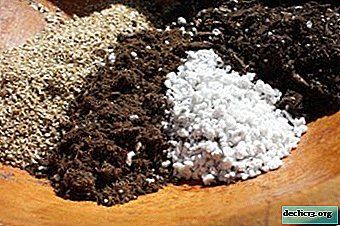 mix turf land;
mix turf land;- humus;
- perlite or vermiculite in a ratio of 1: 3: 1.
As an option:
- soil for azaleas or rhododendrons;
- peat;
- pieces of bark;
- expanded clay (up to 3 mm);
- chopped moss - sphagnum in equal proportions.
Another recipe: 2 parts of leafy land mixed with 4 parts of humus, 1 part of sand and 2 parts of peat. Such soil will be air - and permeable, loose and light.
Pot selection
Material
Anthurium prefers plastic or glass, since these substances are not hygroscopic, and therefore do not allow air and heat to pass to the roots (there is no heat during the day and the soil remains long at night), unlike natural materials.
Plastic and glass do not allow the roots to "grow" into the walls of the pot, which will inevitably lead to breakage and injury during transplantation.The size
Anthurium pot should not be spacious, since its roots will freely develop without interweaving in tight dishes, and the plant will be occupied with the development of new lands, and not with flowering. The pot should be wide: the air processes require access to the ground for rooting.
In appearance, the capacity for the anthurium should resemble a bowl - shallow and wide. Prerequisite: the presence of drainage holes and drainage material (expanded clay), which will fill the pot by a quarter of the volume. For a young plant, you can take a pot whose diameter is 8 - 10 cm.
Anthurium belongs to the Aroid family, and as all representatives of this family, anthurium is poisonous. Plant juice, once on the skin and mucous membranes, can cause allergic reactions (redness, itching, rash). Therefore, it is imperative to remember: before proceeding with the reproduction of this plant, you need to wear gloves, and at the end - wash your hands thoroughly with water.
How to prepare for landing?
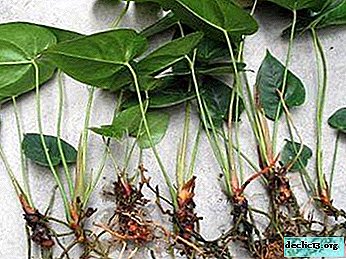 The lateral process should be separated from the mother plant, strong, without visible damage.
The lateral process should be separated from the mother plant, strong, without visible damage.- If it was not possible to successfully separate the shoot from the mother plant, and the roots break off or are very weak, then before planting the shoot in a separate container, you can try to root it in wet moss, sand or perlite.
A necessary condition for any type of rooting is the subsequent mandatory placement of the plant in a mini-greenhouse: for the development of the root system, high indicators of temperature and humidity are necessary.
Such conditions can be achieved by placing a container with a process in a plastic bag, a plastic food container with a tight-fitting lid, or in a cut plastic bottle.
- With the advent of strong roots, the greenhouse can be removed. But it is also important to remember that such a greenhouse should be opened daily for ventilation, otherwise the escape may simply rot.
Step-by-step instruction
- Extract the plant from the old pot.
- Soak an earthen lump in water for 5 to 10 minutes and separate it from the roots.
- On the outside of the bush, carefully separate the lateral process with a sharp knife from the mother plant.
- Sprinkle the cut points with powdered activated charcoal.
- Plant an adult plant in a pot, filling the resulting void with soil.
- Plant the shoot in a separate pot, be sure not to bury the growth point in the ground, and take care of it, as an adult plant.
How to care after?
Caring for a young plant is very simple and consists of several rules:
- bright but diffused lighting (windows facing west or east);
- in winter - backlighting with a phytolamp;
- temperature conditions in the summer within + 20C - + 25C, in winter - not lower than 18C;
- lack of drafts;
- watering is plentiful, but not frequent, avoid stagnation of moisture and liquid in the pan;
- humidity - 70% - 80%;
- top dressing - 2 times a month with complex fertilizers for decorative leafy plants, and during flowering - for decorative flowering plants.
What to do if the plant does not take root?
- The process will fade after planting in the ground. Most likely, when the branch is separated from the mother plant or when the shoot is planted, its root system is disturbed. One will have to try to root another process, since such a young plant has practically no chance of survival.
- The young anthurium shows signs of infectious diseases. To prevent this phenomenon, it is recommended to disinfect the soil, the pot into which the processes will be planted (fungicide treatment, heat treatment).
Reproduction of anthurium, as well as content, is a troublesome business. It is important to remember that it is necessary not only to successfully plant a young plant, but also to provide it with proper care so that it can delight you with flowering for more than one year.
Useful video
From the video you will learn how to multiply Anthurium processes:

 mix turf land;
mix turf land; The lateral process should be separated from the mother plant, strong, without visible damage.
The lateral process should be separated from the mother plant, strong, without visible damage.